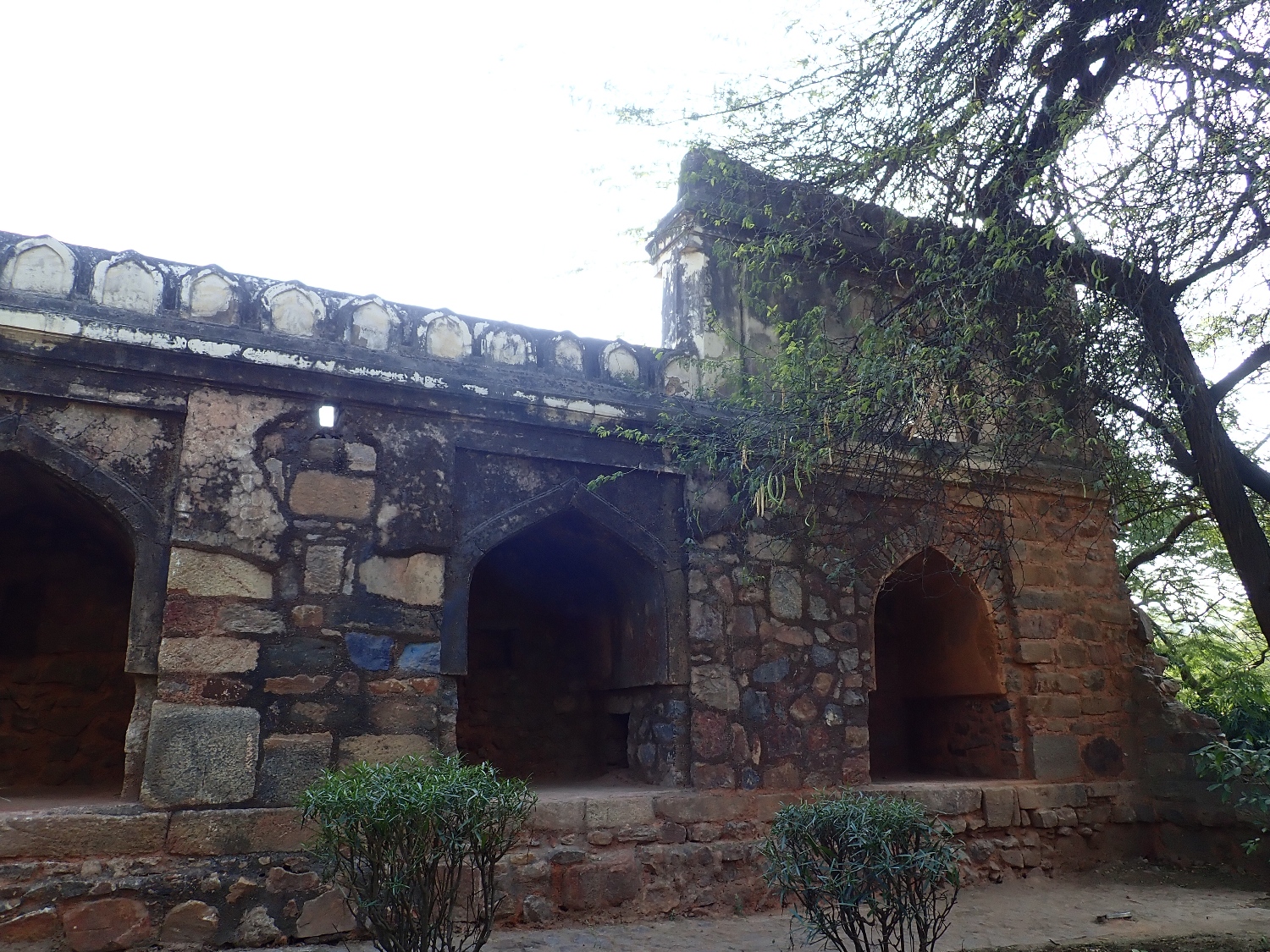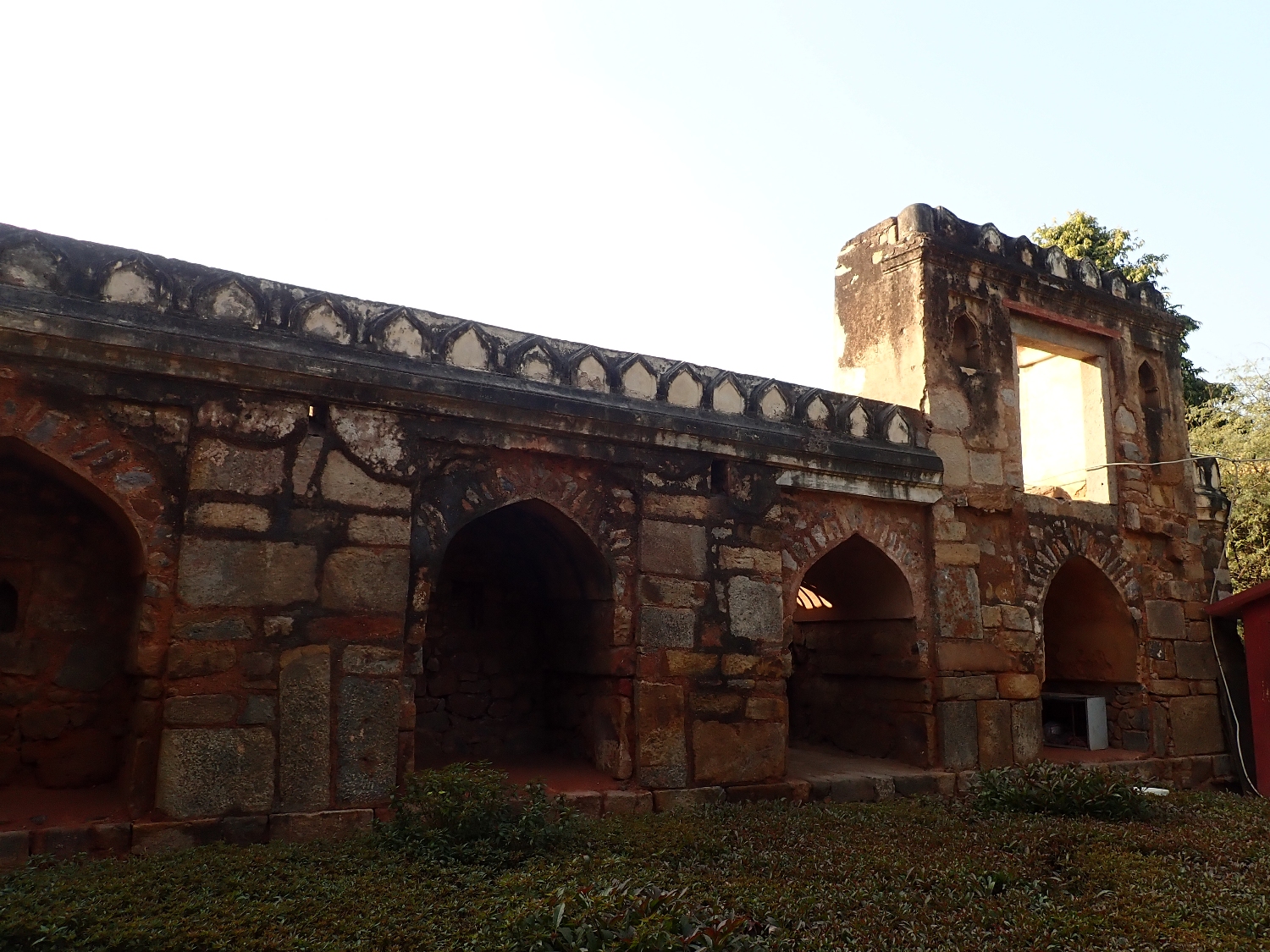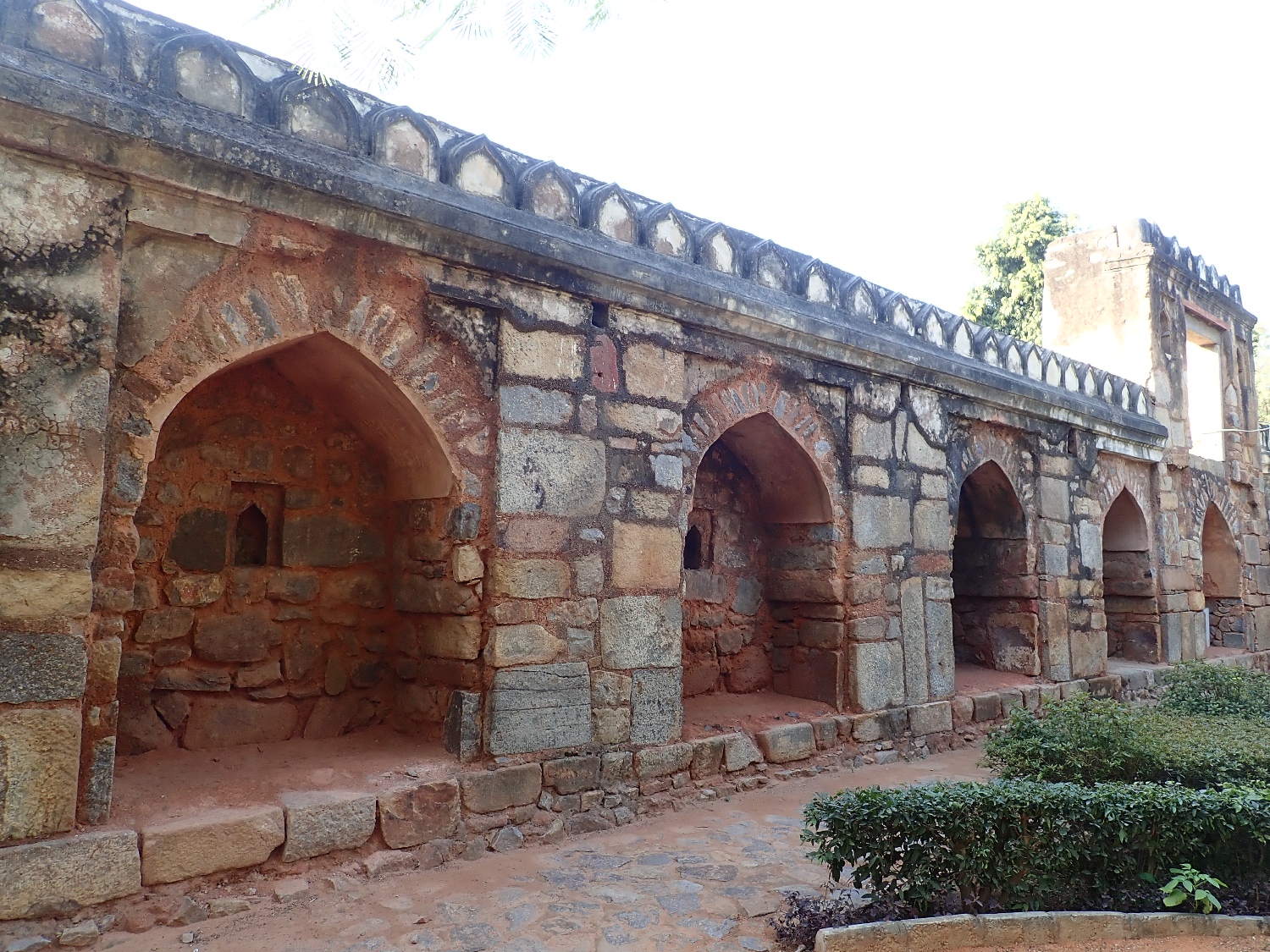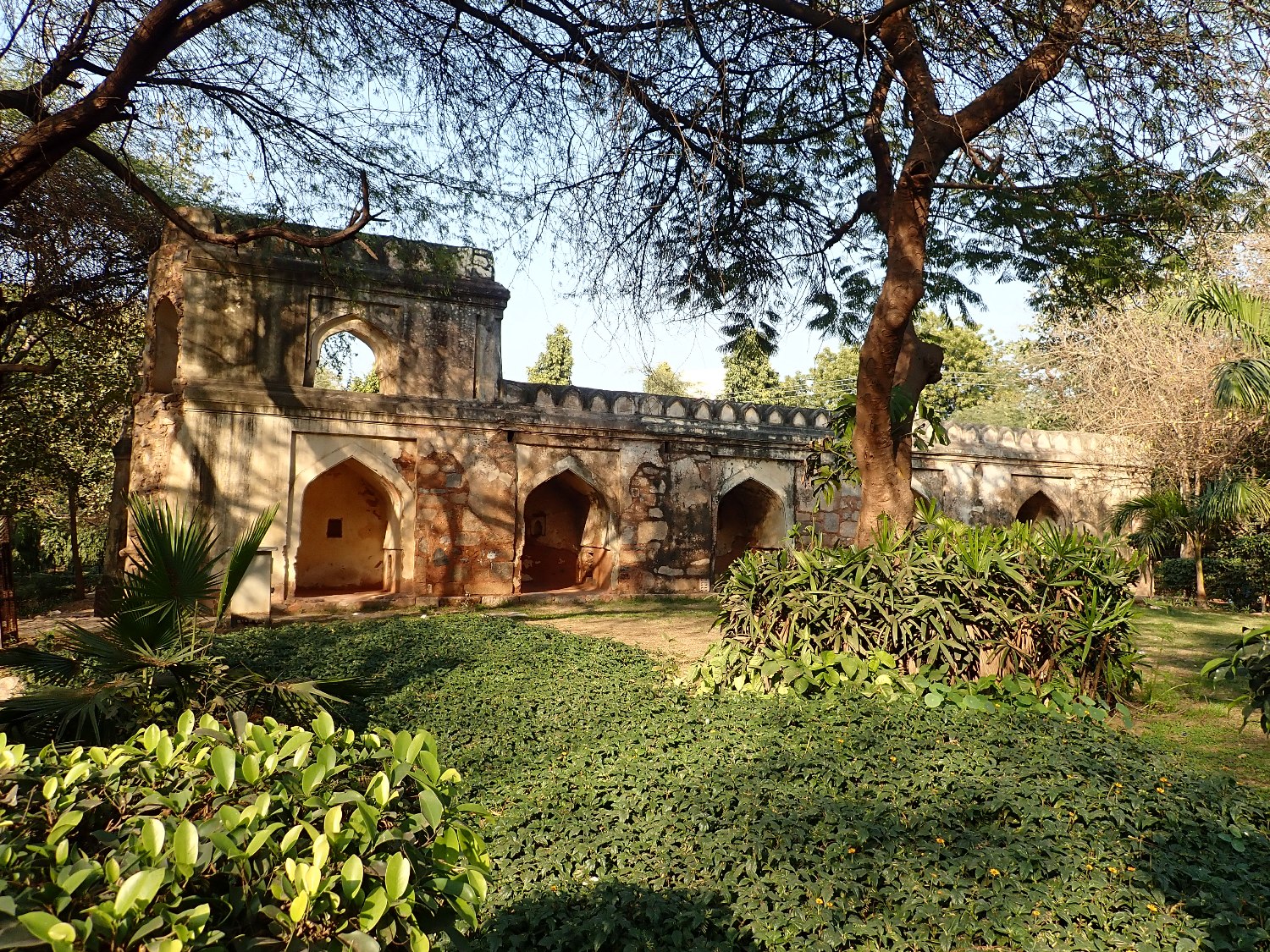



The Darwesh Shah Mosque, attributed to the Lodi period, exemplifies the Indo-Persian architectural style. Positioned on a raised platform, the mosque features multiple recessed mihrabs along its flanks. Its design includes a central open courtyard intended for gatherings and prayer, embodying a modest yet functional layout typical of the era. The structure’s dalan (arcade) showcases arches supported by substantial rectangular pillars and pilasters that reach the full height of the walls. A molded cornice runs along the top, leading up to a parapet wall, which is adorned with slightly projecting kangura (battlement) designs, adding a subtle decorative element. Remnants of the original plaster finish are still visible, offering glimpses into its past grandeur. Constructed primarily from rubble masonry bonded with lime mortar, the walls have been finished with lime plaster, providing a weathered but enduring appearance. Although the patron who commissioned the mosque remains unidentified, the Darwesh Shah Mosque stands as a simple yet historic testament to Lodi-era architectural sensibilities.